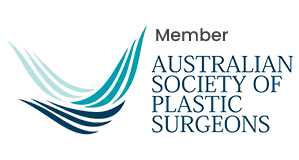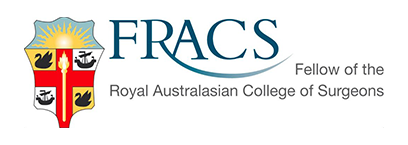Dr Nathan Stewart is a Perth-based plastic surgeon who specialises in breast surgery, including breast reduction surgery. In a breast reduction procedure, excess fat, tissue, glandular tissue, and skin are removed, and the breast is repositioned.
A breast reduction is requested when patients are experiencing large breasts that cause gross physical symptoms such as back aches, neck aches, shoulder and chest pain.
As well as the above symptoms, some patients often find it difficult to breathe, exercise or perform regular daily activities. Clothes may not fit well, the skin that lies under the breast may be irritated due to rubbing and sweat and ridges may appear on your shoulders due to bra indentation.
Breast reduction surgery involves the removal of excess fat and glandular tissue from the breast. Also referenced as a reduction mammoplasty, it was first described in the 7th century and has since become one of the most popular plastic surgery procedures in the world.
There are some patients that may be at increased risk of bleeding and intra-operative complications due to their lifestyle or chronic medical conditions. If you meet the following criteria, it is important to disclose to your GP, and your treating surgeon your conditions and lifestyle;
Smoking and alcohol intake: The constituents of cigarettes and tobacco delay wound healing and increase the risk of necrosis of breast flaps. Alcohol also delays wound healing and may aggravate post-operative pain.
Chronic medical conditions like hypertension, diabetes mellitus and obesity may cause intra-operative complications and impair wound healing.
Breast reduction is a major procedure for which you must be psychologically and financially ready for. Financially, you are looking at being out of pocket for the surgical fee, Anaesthetist fee and Hospital fee if you do not have private health insurance, or do not meet the MBS item number 45523.
When you meet with your surgeon, you must feel comfortable and supported. It is sometimes necessary to meet with more than one surgeon if you are not feeling complete ease.
Your initial consultation with Dr Stewart will involve;
Dr Stewart will provide further literature and information from the Royal Australian College of Surgeons after your consultation for you to take home to read.
In Australia we have incredibly high standards for surgery. Below you will find the steps involved for your breast reduction;
Liposuction involves suctioning fat from the breast. It is the least invasive method, causes minimal scarring and does not alter the breast shape or areola location. Vertical breast reduction: An incision is made at the areola and another from the lower end of the areola down to the underlying skinfold. Fat and glandular tissue is subsequently removed. Anchor breast reduction: Two incisions are made – one vertical and another underneath the breast crease to give the inverted-T shape. This method requires extensive removal of breast tissue and is best for significantly sagging breasts.
Nipple repositioning: The nipple is shifted to a good position relative to the rest of the breast while still connected to its blood and nerve supply. Women with huge breasts may need an additional procedure called free nipple graft. The incision edges are opposed and sutured appropriately.
You will stay one night in Hospital following a breast reduction. This is so that the Nurses can keep you as comfortable as possible with pain management and keep an eye on your observations.
You will wake up in recovery with your compression garment on. This will stay on for 6 weeks, 24/7, only being removed when you shower.
The following morning after surgery Dr Stewart will discharge you from the Hospital and provide you with his mobile phone number in case you have any questions when you return home. You will see our Nurse in our rooms 5 days after surgery to review your wound and ensure there is no sign of infection.
On discharge from the Hospital you will be given self-care instructions and medications to take for the following 7 days. During this it is imperative that you follow a diet of vegetables and foods that will assist your body to heal. Drinking water and avoiding exercise will put you in a good stead for recovery.
Possible risks associated with reduction mammaplasty include:
In some cases, insurance may cover breast reduction surgery if it is deemed medically necessary due to physical discomfort or health problems caused by large breasts. It’s important to check with your insurance provider for their specific coverage policies.
Nipple sensation may be temporarily lost after breast reduction surgery, but it typically returns within a few weeks to a few months. In some cases, nipple sensation may be permanently lost. Your surgeon will discuss the risks and benefits with you before the procedure.
Breast reduction surgery can impact the ability to breastfeed, but the extent of the impact depends on the technique used and the amount of tissue removed. It’s important to discuss your plans for future breastfeeding with Dr Stewart before undergoing the procedure.
Breast reduction surgery is typically performed with general anesthesia and patients may experience some discomfort and pain during the recovery period. Pain can be managed with prescribed medications.
Yes, breast reduction surgery involves making incisions, so there will be a scar. The scar is typically located around the areola, in the crease below the breast, and vertically down the center of the breast.
The recovery time for breast reduction surgery varies for each individual, but most patients can return to normal activities within 2-4 weeks. Exercise can usually be resumed from 6 weeks.
Good candidates for breast reduction surgery are individuals who are in good overall health and suffer from physical or emotional discomfort due to large breasts.
Breast reduction surgery, also known as reduction mammoplasty, is a cosmetic procedure to remove excess fat, glandular tissue, and skin from the breasts to reduce the size and alter their shape whilst lifting the breast.
The most critical choice you can make for any cosmetic procedure is choosing the right plastic surgeon. Dr Nathan Stewart is a board-certified Consultant Specialist Plastic and Reconstructive Surgeon in Perth. He is a rare blend of sound technical knowledge and empathetic listening to give you the best service. Dr Stewart currently consults in Perth and Bunbury. Book an appointment with Dr Stewart and his team today to begin planning your breast reduction.
Affiliations




After any kind of breast surgery, it is important you take as much time as you need to rest and recover after your breast reduction surgery. You will be provided with a number of information sheets and checklists to prepare you for your recovery, including any symptoms to watch out for and tips to keep you as healthy and comfortable as possible during this time.
Following the procedure, you will likely experience some moderate discomfort, as well as bruising or tenderness. Dr Stewart will discuss your pain medication needs with you and tailor a dosage and schedule to suit your individual circumstances. Most symptoms will settle within 4 – 6 weeks.
Should you have any questions at any time, please don’t hesitate to contact Dr Stewart or the team.!